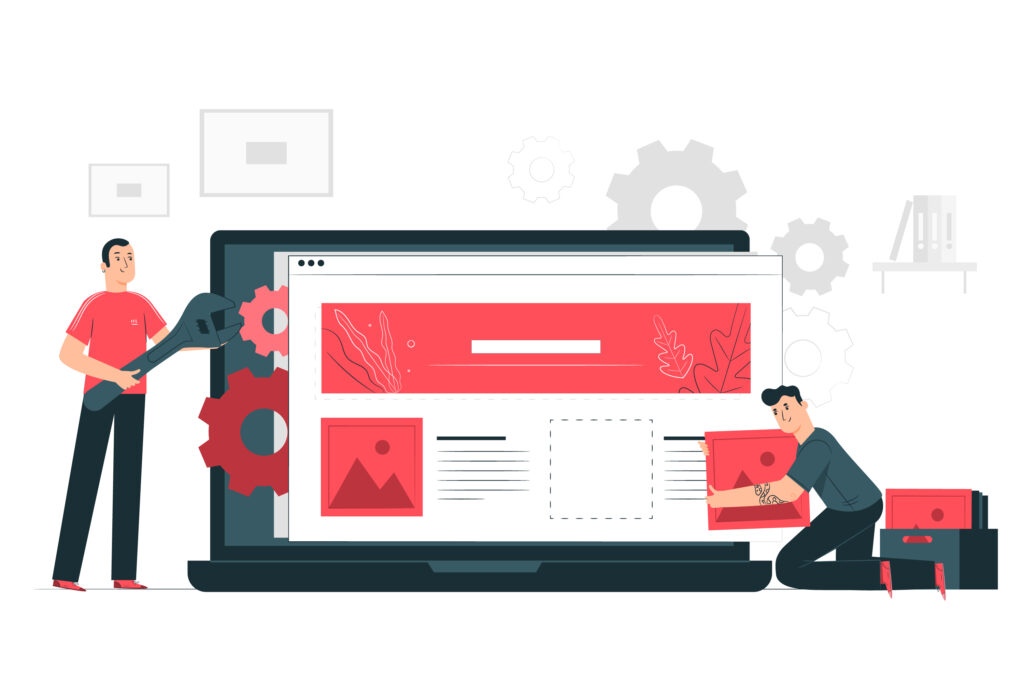Setting up a Google Ad campaign can be incredibly exciting and can be a huge boost for your business. However, deciding which campaign goal to use and how each one can differently effect your business is extremely important!
The Six Different Google Ad Campaign Goals
- Sales
- Leads
- Website Traffic
- Product & Brand Consideration
- Brand Awareness & Reach
- App Promotion
About Campaign Goals
Using goals in Google Ads can help make the decision making when it comes to creating a new campaign infinitely easier. Selecting the goal that best fits your needs and what you want to come from your campaign narrows down the features and settings Google will show you in relation to creating your campaign so that only the most relevant and effective options appear for you.
When you create a campaign, you will be prompted to choose a goal based on what outcome you are hoping to achieve with your campaign. If you are trying to sell a product, your goal will most likely be sales because that is the purpose you want your campaign to serve. As you set up your campaign with this goal in mind, you’ll see more recommended features and settings that are recommended for the specific goal you chose. This will further customize your campaign and optimize it so that your campaign is best suited to meet your goals.
You can add or remove goals at any time and if you really want to you can create a campaign without a goal. However, it is recommended that you set your campaigns up with goals in mind because it will help you become far more successful later on.
The goal you choose can also help narrow down the right campaign type to use because various campaign types work better for certain goals. These algorithms set in place when choosing your campaign goals will ease the process of creating your campaign and will set you up for greater success down the line.
When to Use the Sales Goal in Google Ads
The sales goal focuses on driving sales or conversions. This can be done through various formats and can be tracked multiple different ways. Whether you’re making a traditional website sale, a sale over the phone, or even a sale within an app, Google can track which sales came through your ads and which sales were independent of your advertisements, meaning the sale came through another avenue or the customer found your product without clicking on any of your ads.
The sales goal isn’t just good for drawing in new customers for sales, it can also reach back out to prospective customers that have interacted with your brand in the past but never purchased anything or those who showed interest in making a purchase but never followed through or completed their order. This portion of the sales goal is very useful as it can remind people about your product and push perspective clients to come back and finish a partially completed order or go ahead and purchase that item they left sitting in the cart at checkout.
Features of the sales goal include things that start the purchasing or converting process. This means that everything your campaign does will be centered around convincing prospective customers to buy from you. Whether they are new to your brand, or a returning customer that’s been buying from you for years, they will be the target audience. Bidding strategies for the sales goal focus on clicks and extensions, getting people to your landing page where they can then make a purchase. Ads with the sales goal will show to people browsing on sites, watching videos, or using apps all across Google’s network.
The sales goal is arguably the most common, because many ads are focused around driving sales or bringing in new customers. Overall, if you are selling a product or service of any kind you can’t go wrong with the sales goal.
When to Use the Leads Goal in Google Ads
The leads goal is all about collecting information. Usually, this goal is used when you want email addresses for a newsletter or a name and number to contact later for your services. However, this goal can also be used for collecting other kinds of information such as asking people to fill out a survey or select which book they would like you to review next on your book club podcast. No matter what information you are looking for, the leads goal is the one for you.
You can also use the leads goal as a precursor to the sales goal, having prospective customers interact with your brand for a simple email sign up before approaching them again with a sales-driven ad. Customers that are exposed to your brand multiple different times are more likely to purchase your products and after trusting you with an email address they will be much more likely to trust you with a purchase.
Features of the leads goal include things that start the conversion process. However, unlike the sales goal, the leads goal focuses more on audiences, targeting the right prospective customers, and drawing those people in than just getting a certain number of clicks or views. Leads-oriented campaigns will show in the same places that sales-oriented campaigns will show, across websites, video platforms, and more within Google’s network.
The leads goal may seem less important because it is not immediately driving profits. However, using emails to follow up with prospective clients, introducing people to your brand to build trust and foster a sale down the line, or collecting information for other purposes are all wonderful reasons to set up a campaign with a leads goal.
When to Use the Website Traffic Goal in Google Ads
The website traffic goal is oriented towards getting people to visit your website. This can be used to promote sales, especially in scenarios where your product has many customization options such as color or size. However, it is also used when you simply want people to see your website. Maybe you have a blog post that you want more people to read or you work for an animal shelter and you need people to click on your ad so they can see that adorable puppy that’s on the front page of your website. Whatever the reasoning is behind needing more traffic to your website, the website traffic goal is designed specifically for that.
Features of the website traffic goal are centered around showing relevant ads to researching customers. Unlike some other goals that will show ads to people even when they’re not searching for a particular thing, the website traffic goal focuses more on showing ads to people when they are searching for that thing or for something similar. The bidding strategies are also heavily focused on what will bring in the most traffic to your site.
The website traffic goal is a wonderful tool to use when you just want people to look at your site. In many cases your landing page should do the talking for you so you want to make sure people are landing on a page that will convince them to stay instead of landing on a page that causes them to click away.
When to Use the Product & Brand Consideration Goal
The product and brand consideration goal is a little more niche. This goal fits best with brand new companies that still need to create a name for themselves and develop trust with the general public or for products that are more unique or not as well known so that you can educate people about your products.
This goal encourages potential customers to explore what you offer, even if they are not immediately familiar with the concept of it. It’s all about educating people and introducing them to knew things at a time when they are open to learn. This goal can also be useful if you are advertising something in a very competitive market because you can educate people on what makes you special and convince them to buy from you as opposed to a competitor because of what sets you apart from the competition.
The features of the product and brand consideration goal are designed to inspire people by using targeted audiences to show ads to people when they are open to discovering new products or learning new ideas and helping you create visually appealing ads to draw in prospective customers and get them interested in what you are trying to share with them.
When to Use the Brand Awareness & Reach Goal in Google Ads
The brand awareness and reach goal is similar to the product and brand consideration in the fact that it is designed to introduce people to something they are unfamiliar with. This goal is designed to make people familiar with your brand if they have never heard of it before or to introduce previous customers to a new product or service that they may also be interested in.
This goal is perfect for brand new businesses because it introduces your brand to many different prospective customers, getting your name out to the world. The brand awareness and reach goal also uses visually-centered ads to help people associate a brand with your company. This can mean anything from a color scheme to a logo to a product itself, associated a particular image with you and your company.
However, this goal is not just for people starting out. For larger or more established companies the brand awareness and reach goal can still be just as useful when releasing a new product as it can get the word out and draw back previous customers that may also be interested in your newest product.
The features of the brand awareness and reach goal are focused around building brand recognition by using visually compelling ads and incorporating a bidding strategy to maximize views. These features also help to attract new customers because of their visually appealing nature.
When to Use the App Promotion Goal in Google Ads
The final goal you can use in Google Ads is possible the simplest of all the campaign goals. The app promotion goal can only be used when promoting an app and is designed for exactly that. It is made to drive app installments and is usually paired with an automated campaign to display your ads on the Google Search Network, the Display Network, Google Play, within other apps, and on YouTube.
This goal is also very visual in nature and often incorporates videos to properly show how your app is used and to convince people to try it out. Little to no text is used in app promotion as visually appealing ads are the most effective way to drive app installments.
The app promotion goal is most commonly used with newer apps to introduce them to the public, but it can also be commonly used within larger apps to drive even more downloads or in-app purchases. This goal also shows on more platforms than the other goals, giving it the broadest reach. Apps can be promoted using other goals as well, but the app promotion goal is by far the most effective when it comes to promoting an app.
Commonly Asked Questions:
What should my budget be?
While it greatly varies between different business and different campaigns, I tend to set most of my campaigns at a starting budget of $5. I watch my new campaigns closely and if they perform well, I might raise the budget. However, if they do not perform well, I make sure to quickly fix the problem or lower the budget if the campaign is hurting the overall account.
How do I know if my campaign is performing well?
While what is considered “good performance” greatly varies from business to business, there are a few things to look for when you’re first getting started. A CTR (click through rate) of 2% or higher is considered a good interaction rate with your website, and anything below a 1% is very bad. When looking at conversions, the best tool to use is the Conversion Value/Cost. This calculates your ROAS (return on ad investment) and a ROAS higher than 4 is generally considered good.
How many campaigns should I set up?
Start small, especially if you’re new to Google Ads. Set up one campaign at a time and then give that campaign a week or two to find its feet. If it’s performing well, great! If not, you know that it’s time to go back to the drawing board. From there you can start to determine which ads work for you and which ones don’t, the most effective way to market your brand, and which products or services to pay more attention to based on what your customers are actually purchasing.
Related Articles:
Everything You Need to Know About Google Ad Keywords
How to Create Landing Pages for Your Google Ad Campaigns Using WooCommerce
The Different Types of Google Ads and How to Use Them
The Different Google Ad Campaign Goals and When to Use Each One
Google Ad Bidding Strategies and When to Use Each One






